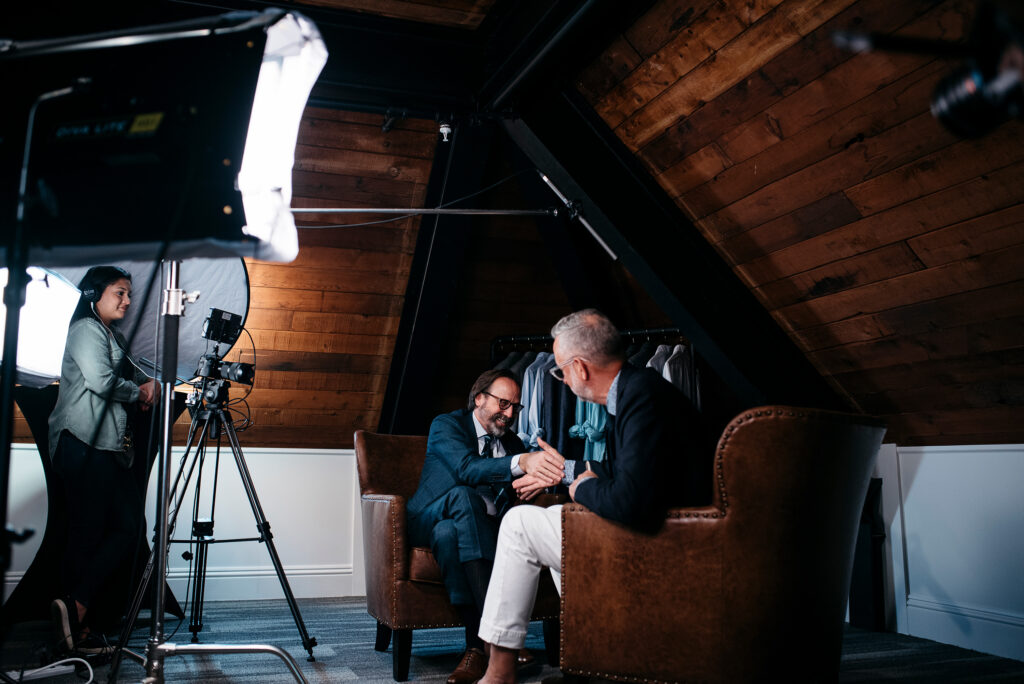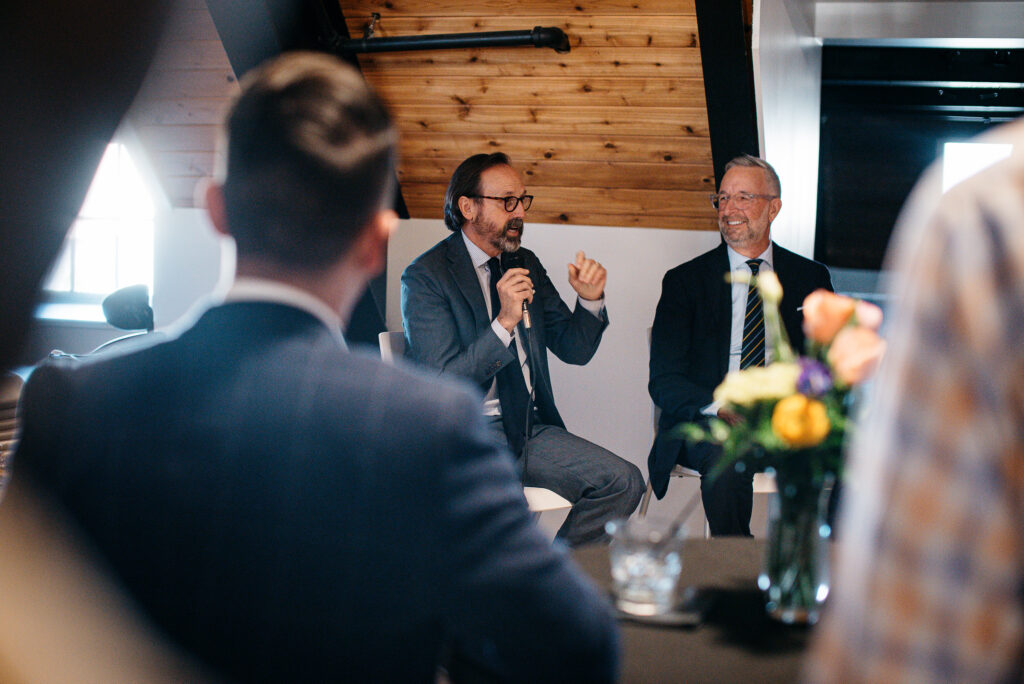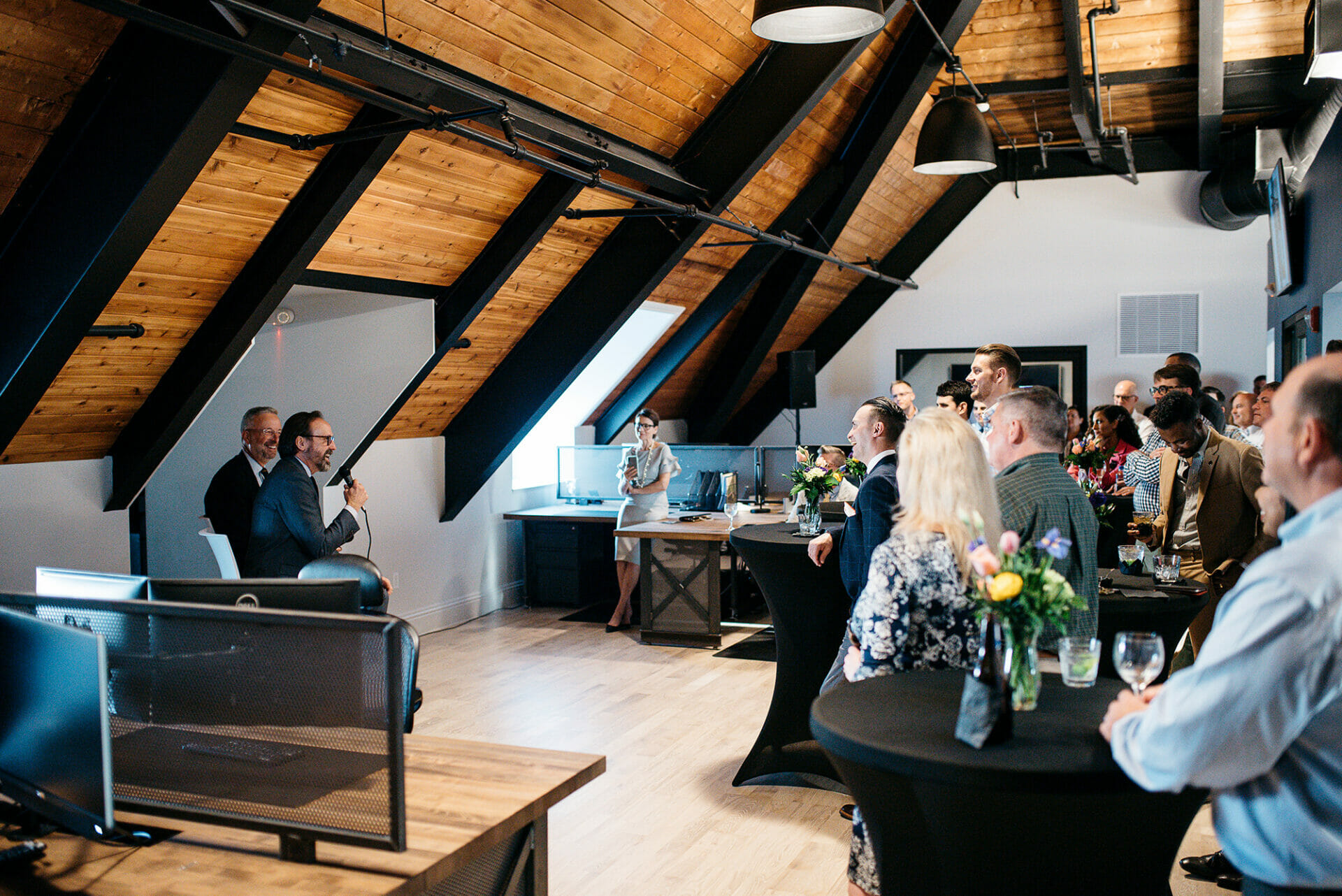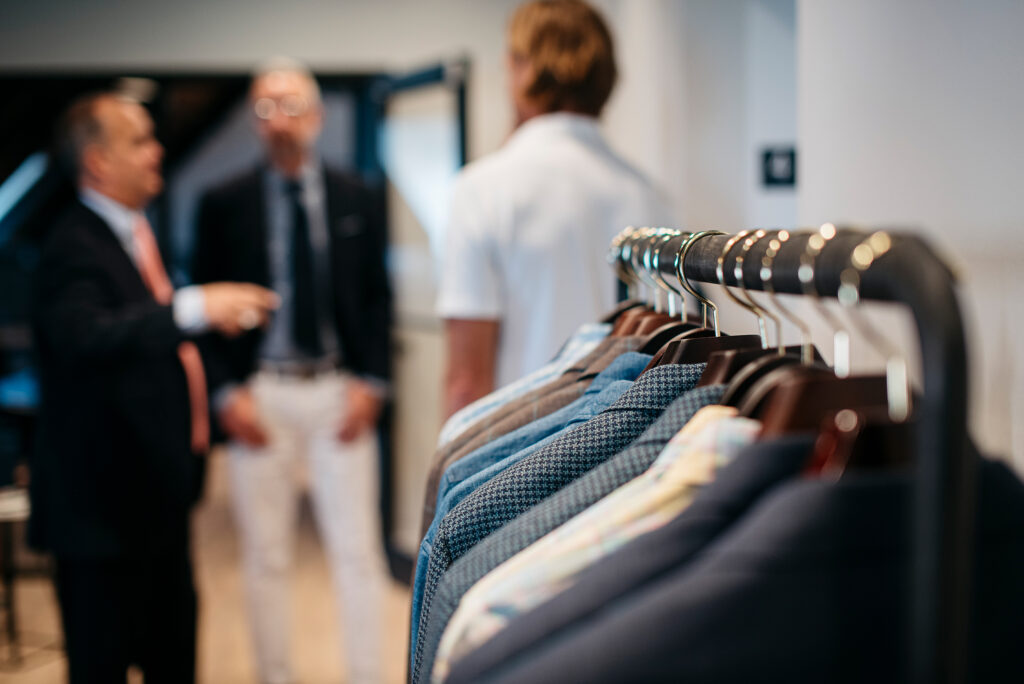Photographed by Dan Austin
Core Wealth Advisors hosted a cocktail hour at their HQ for a talk and trunk show with Sid Mashburn, fashion designer and owner of the “Best Men’s Store in America,” according to GQ and Esquire. Mashburn sat down with local style icon Tim Cox to discuss the importance of dress in the modern age. From the Southern influence on fashion to essential items every man should have in his wardrobe, Mashburn shares a plethora of advice on all things men’s fashion.
[modula id=”20234″]
Tim Cox: Tell us a little bit about what began your journey into the fashion industry.
Sid Mashburn: That’s a great question, because it’s funny. At a super young age, I loved clothes, and you don’t really realize what the family pass-alongs are until later in life. My grandparents were merchants and retailers in a small agricultural community in Mississippi, and they had a furniture store, a hardware store, an implement store, and a dry-goods store. Dry goods were essentially clothes. So I was kind of around fashion, but I wasn’t really conscious of it.
 I had older siblings — they were all several years older than me — and they loved clothes. So we were always getting magazines at the house whether it was Seventeen, Glamour, or Vogue. I was always looking at women’s fashion magazines, and my brother was an excellent dresser. Fashion was always around us. My dad liked to dress, my mom liked to dress; it was just something we did. We were never of huge means, but we never really lacked anything either. Even like in third and fourth grade, I was putting outfits together. It was a little weird for some people, but that was just my deal. So, I was exposed to it by my siblings and the family business.
I had older siblings — they were all several years older than me — and they loved clothes. So we were always getting magazines at the house whether it was Seventeen, Glamour, or Vogue. I was always looking at women’s fashion magazines, and my brother was an excellent dresser. Fashion was always around us. My dad liked to dress, my mom liked to dress; it was just something we did. We were never of huge means, but we never really lacked anything either. Even like in third and fourth grade, I was putting outfits together. It was a little weird for some people, but that was just my deal. So, I was exposed to it by my siblings and the family business.
TC: Being from Mississippi and choosing to open your first shop in Atlanta, how do you think the South has inspired you — fashion, and maybe men’s wear, specifically?
SM: That’s an awesome question, because I don’t think people really understand the South’s contribution to fashion. It’s funny, because when we first opened the store, GQ wanted to do a party with us. Jim Moore, the GQ creative director at the time, said, “We’re not quite so magnanimous that we just want to celebrate you. We understand the power of Atlanta, of the South, and what it means to the voice of the nation.” He also liked that I always wore color when I lived in New York. Most people in fashion, especially New York, wore black and gray. That was never my jam.
I think the South is a little lighter in its approach to fashion. It’s a little more of an expression of the heart. It’s not just about being cool, it’s about feeling good about what I’m wearing. The other thing is, it’s hot for the majority of the year, so the color almost becomes part of your expression because your wardrobe is a bit more limited.
 Growing up in an environment where clothes were appreciated was pretty great. I went to Ole Miss where people dressed to the nines. I think the guys still wear a coat and tie to the game; maybe they don’t anymore. When I was there they definitely did. Just because we’re wearing a coat and tie doesn’t mean that we’re uptight, it’s just part of what we do. It should look and feel like you’re in jeans. That’s how comfortable my suit and tie are. I don’t see it as off-putting or too uptight, but I don’t want to look too much like a Sunday school teacher either. I want there to be a looseness and ease. I think that goes with the South, too. It’s not super crisp — it has a little bit of ease, similar to the personality of a lot of people down here.
Growing up in an environment where clothes were appreciated was pretty great. I went to Ole Miss where people dressed to the nines. I think the guys still wear a coat and tie to the game; maybe they don’t anymore. When I was there they definitely did. Just because we’re wearing a coat and tie doesn’t mean that we’re uptight, it’s just part of what we do. It should look and feel like you’re in jeans. That’s how comfortable my suit and tie are. I don’t see it as off-putting or too uptight, but I don’t want to look too much like a Sunday school teacher either. I want there to be a looseness and ease. I think that goes with the South, too. It’s not super crisp — it has a little bit of ease, similar to the personality of a lot of people down here.
I think one of the greatest lessons I learned when I opened my store was the idea of a good, better, best pricing strategy. When people showed up at my store in Atlanta, I didn’t want them to come in and see all this expensive stuff that they couldn’t buy. There’s almost a sense of responsibility to the people that you grew up with to provide something for them, too. I don’t want them to be turned away at the door. I experienced this very early on from a guy who was a chicken farmer in Gainesville, Georgia. This was not your ordinary chicken farmer. He was a man of incredible means, very nice, very gracious, very humble, very low key. We had a very expensive designer line in the store at the time, and he came in and turned the tag over on a down vest that was about $1,800. My stomach just dropped. I thought, “Why in the world do I have a $1,800 down vest in the store? Who really needs that?” It heightened the responsibility and privilege of taking care of everybody. So when we wrote the business plan, we said, no demographic — we’re for every man.
It’s not inexpensive — a lot of the product in there is not. It’s not attainable by a lot of people, but we have product in there that is. We want it to be more of a cultural crossroads, not just a place where guys come to buy the latest or the greatest clothes.
A large part of our business is the Southern hospitality. Anybody that walks in, we say, “Hug them with your eyes,” because we can’t always get to them. We want to make them feel welcome. We don’t start with, “Hey, can I help you find something?” or “What are you looking for today?” We want them to feel like we are welcoming them into our home. The South doesn’t just affect the clothes; it affects the whole experience.
 TC: What would you say to the guy who wants to dress better but doesn’t know where to start?
TC: What would you say to the guy who wants to dress better but doesn’t know where to start?
SM: Find a friend whose style you like that’s not too extreme or too ordinary, and just ask them. That’s one of the ways we want to show empathy to the guys and girls on our teams. We want to express that you can ask us for advice without feeling judged. We want to be mindful of who that person is, not just from a style perspective, but also from a budget perspective. Everybody needs somebody to help them along. Guys are slow to ask — we don’t want to ask for directions; we will not ask for help.
Also, you can get a lot of great advice, but you have to be careful. You can’t just take any advice. You have to whittle through what to wear, when to wear it, how to wear it, and what to look for. The other thing is, when we buy, we like to buy with quality in mind and the idea that style should last a long time. For example, the cut of the suit that I’m wearing today is almost exactly the same cut we started with in 2007. It can stand the test of time. It’s not meant to have a moment. It has a longer lifespan.
TC: What’s the difference between style and fashion?
SM: Fashion comes and goes. Style is a little more long-lasting. The interesting thing about style is it doesn’t necessarily mean a person is well dressed, but there’s a unique style to the way they dress. For example, we have a good friend who lives in New York, who works for Ralph Lauren, and some people would say that all of his clothes are old and torn up. But he makes it look very cool. He’s got his own style.

“We want it to be more of a cultural crossroads, not just a place where guys come to buy the latest or the greatest clothes.”
TC: What are three essentials every man should have in his closet?
SM: I have four: a navy blazer; jeans; gray, tropical-weight trousers; and a white shirt. The navy blazer allows you to go to any event. It’s a piece of utility apparel, and I can put everything in here. It’s a man’s purse. The jeans and the gray trousers, to me, are the same pants. They’ll go with everything. The gray trousers allow you to dress up the navy blazer. The jeans allow you to dress down the navy blazer. Also, the white shirt, you want it well-cut.
The other important thing is to find a good tailor because you can take things that you bought at a thrift store, off of eBay, from anybody, and tailor them to you.
